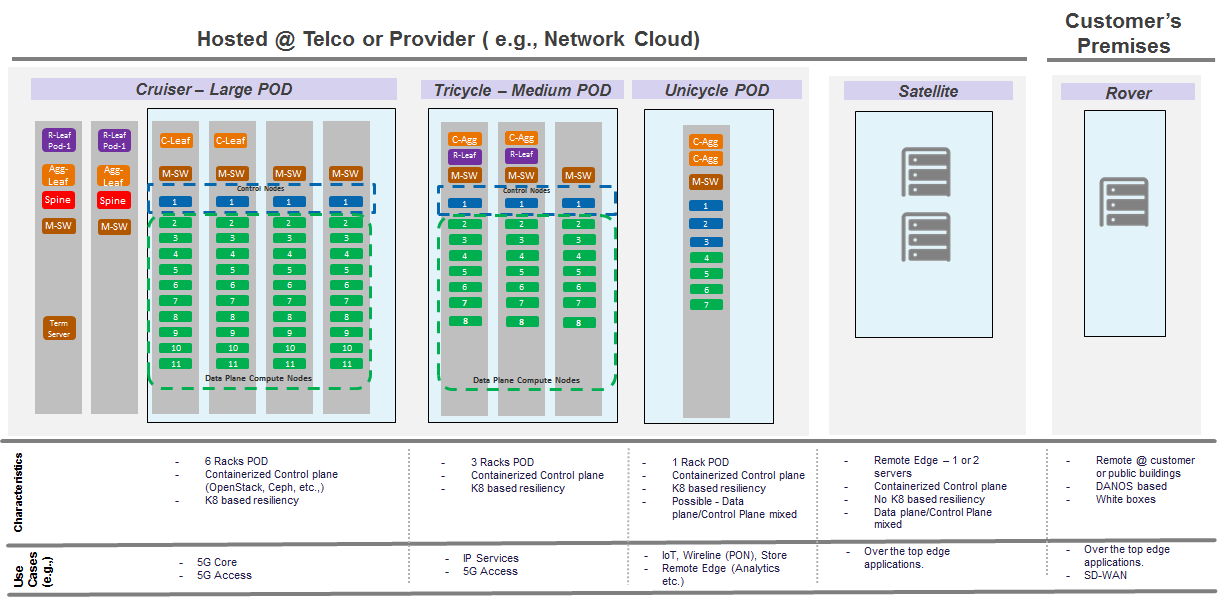Edge Point of Delivery (POD) is the method in which a blueprint is deployed to a edge site. For example a edge location could have a single server or multiple servers contain in one or more racks. As the blueprint uses the declarative configuration, Point of delivery (POD) allows the way to declare the way the edge devices are organized for the deployment. POD allows cookie-cutter method to deploy on a larger scale (e.g., 10,000 plus locations) at a reduced cost.
As an example, the below figure provides an integrated platform of network, compute and storage that is optimized to deliver the services required in the blueprint to support the applicable use case. The figure below shows various PODs such as Cruiser, Tricycle, Unicycle, Satellite, and Rover which are targeting different use cases. Each POD has different hardware components to meet the particular Telco and edge platform enterprise use cases.
Akraino allows support for multiple blueprints, for a variety of edge computing use cases.
The Cruiser POD consists of 6 Racks. The first two Racks, hold redundant pairs of R-Leaf, Spine, Agg Leaf and management switches. The remaining 4 Racks contain Compute & Control server nodes, Management Switches and a pair of C-Leaf that are spread across the first two racks. There are 44 server nodes with a distribution ratio of 11 server nodes per rack. One server node per rack is used as a control node for a total of 4 control plane nodes in the POD. The remaining 40 nodes are tenant compute nodes and are further split into different host aggregates. This POD runs containerized control plane and provides K8 based resiliency and can be targeted for 5G Core and/or 5G Access use cases.
